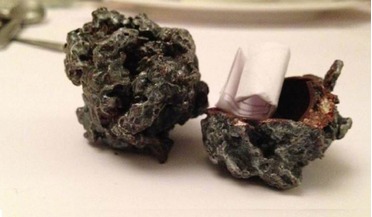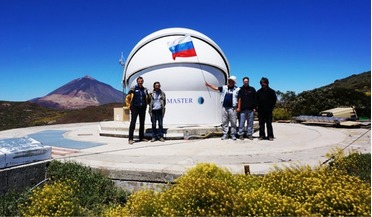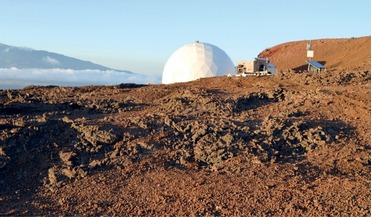 February 2016
Danish Surprise for ISS Crew
February 2016
Danish Surprise for ISS Crew
... ones So what ended up being on the menu? The first course - designed to trigger as many receptors as possible - was salt-cured beef, specially prepared to keep its red colour (typically the curing process turns food grey...
 February 2017
Global robotic network for monitoring near-Earth and outer space
February 2017
Global robotic network for monitoring near-Earth and outer space
... observatories where MASTER II is located, for example, the Canary Astrophysical Institute Observatory (Tenerife, Spain), the 10 m SALT telescope observatory (Sutherland, South Africa) and the Felix Aguilar Observatory (Argentina) to name but a few...
 May 2017
Recipe for success on flights to Mars
May 2017
Recipe for success on flights to Mars
...- and calorie-dense brick that would last for many years; the modern equivalent of hardtack and salt pork, though with better nutritional value. But such food ‘bricks’ are less than ideal from...
 June 2018
Space 2080 a future perspective
June 2018
Space 2080 a future perspective
... terraforming. They have already raised funds for ‘seeding’ synthetic photo bacteria in those numerous places where salt water is present in summer. They would produce oxygen which will generate a greenhouse effect within half a century...
 June 2018
Cosmic communications and the anthropology of outer space
June 2018
Cosmic communications and the anthropology of outer space
... of us. Wertheimer confesses, “I do really buy into the ‘60s view that any advanced civilization worth its salt has stopped killing. They’re interested in helping young, emerging civilizations like Earth’s.” Tarter speculates that a communicative...
 February 2019
Simulating lunar and martian regolith in the laboratory
February 2019
Simulating lunar and martian regolith in the laboratory
... well as various other geologically-derived materials. On Earth, regolith can be divided into various types of sediment, ash, salts and, most importantly, soil. Terrestrial regolith generally contains organic material due to the abundant and diverse...